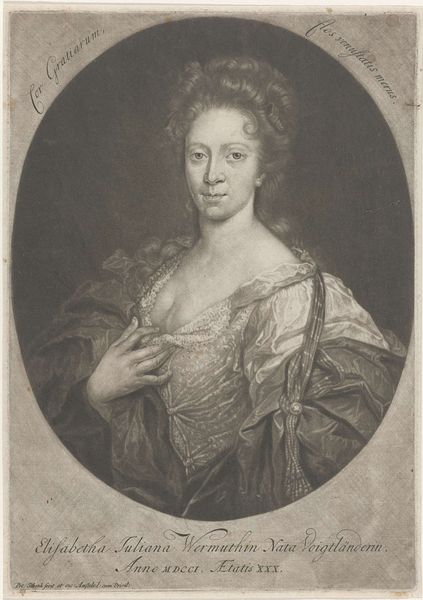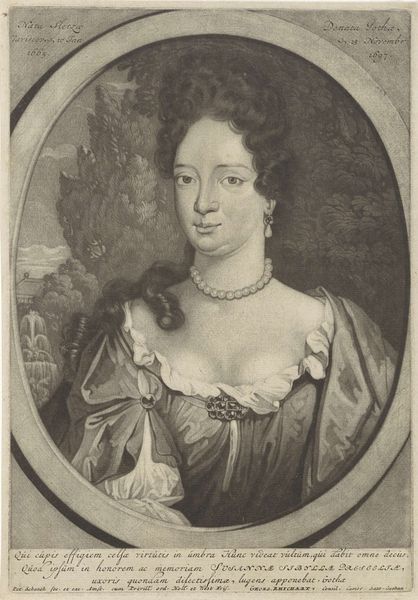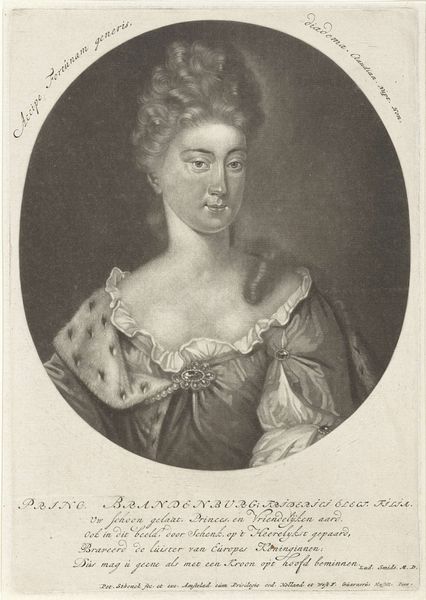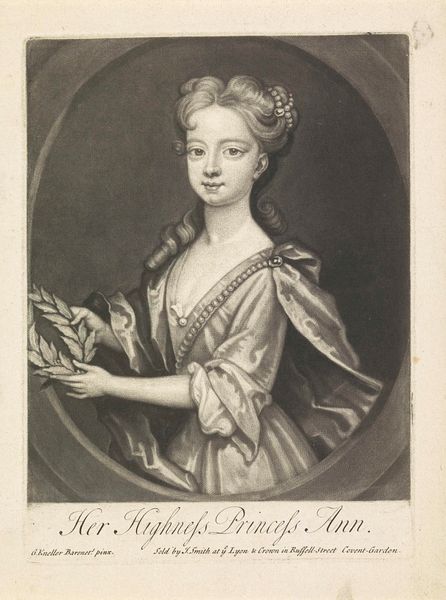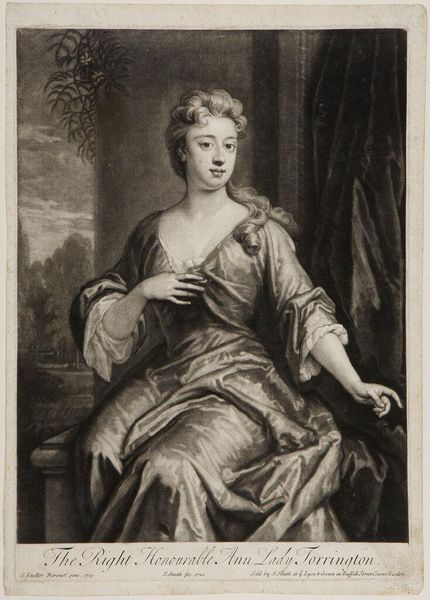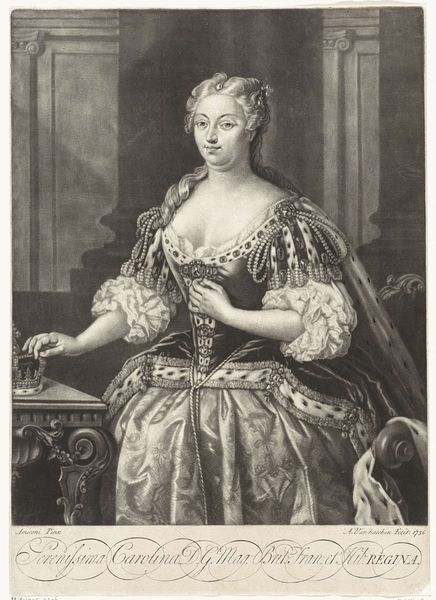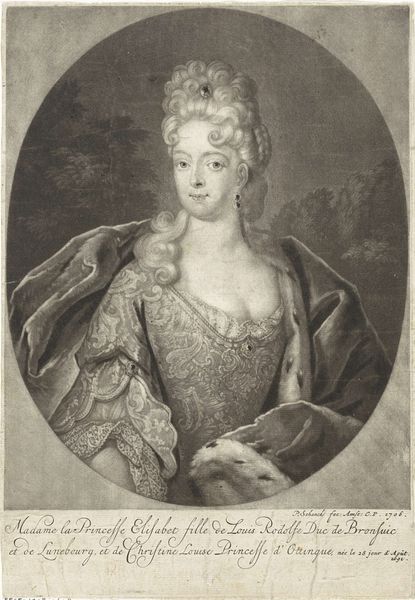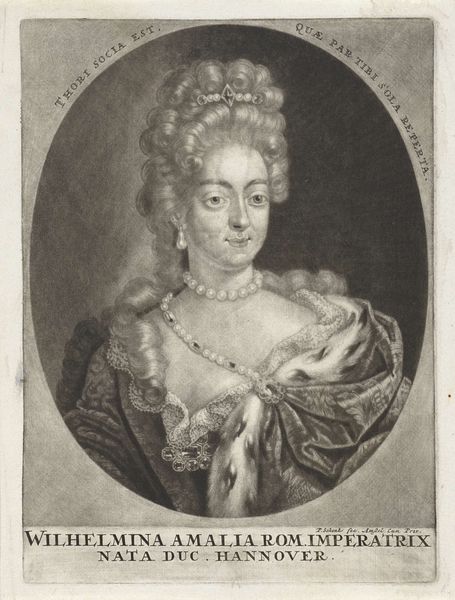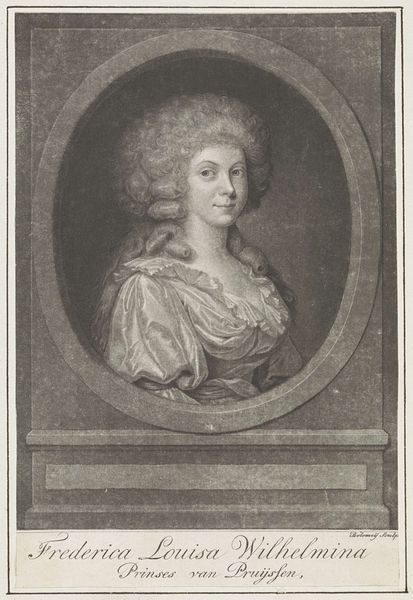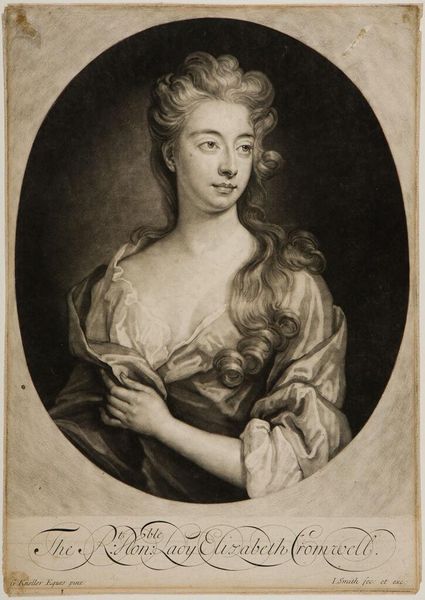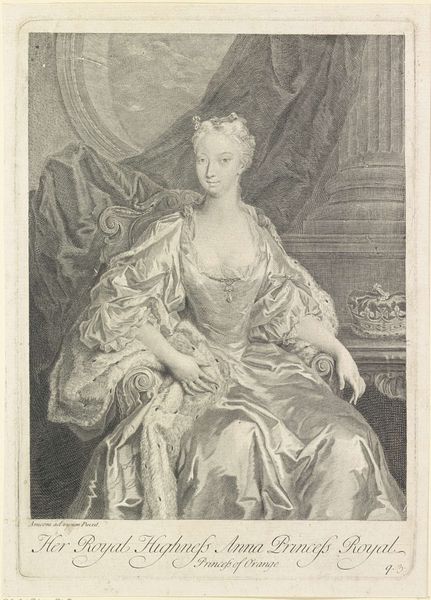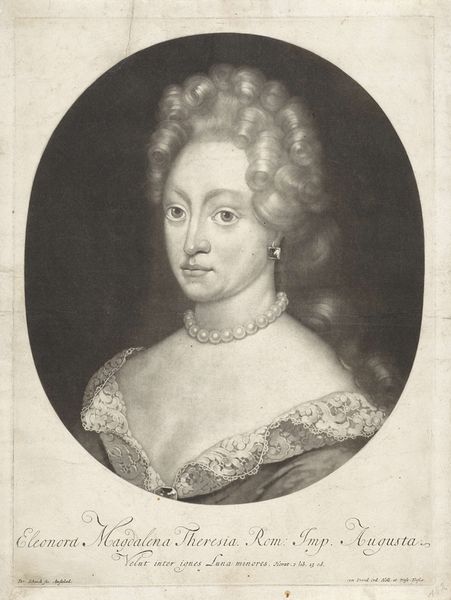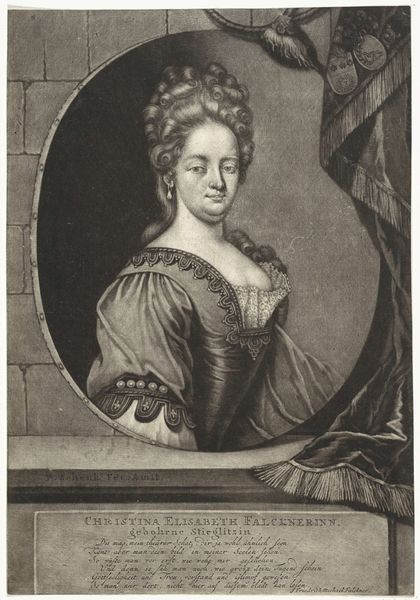
drawing, paper, engraving
#
portrait
#
drawing
#
baroque
#
charcoal drawing
#
paper
#
historical photography
#
genre-painting
#
engraving
Dimensions: height 335 mm, width 249 mm
Copyright: Rijks Museum: Open Domain
Editor: This is a portrait of Henriëtte Amalia van Anhalt-Dessau, created sometime between 1683 and 1699, attributed to Petrus Aeneae. It looks like a charcoal drawing or maybe an engraving. It has this very formal, almost regal, feel, typical of Baroque portraits. What do you see in this piece? Curator: Beyond its aesthetic qualities, this portrait offers a window into the socio-political landscape of the late 17th century. Consider Henriëtte Amalia's position: a woman of power and influence, yet also constrained by the patriarchal structures of her time. How might her agency be both asserted and suppressed through this representational form? What are the power dynamics at play here between the artist, the sitter, and the intended audience? Editor: I hadn't really thought about the constraints she might have faced. I guess I just saw the pretty dress and the fancy hair. So you're saying even in a portrait, a woman’s power could be both on display and limited? Curator: Exactly. The very act of commissioning a portrait was a statement of power. However, the style, pose, and symbolism used could reinforce existing social hierarchies or, conversely, subtly challenge them. Is there anything in this composition or in her gaze, that strikes you as possibly unconventional for portraits of women during the Baroque period? Think about how female figures were commonly portrayed. Editor: Now that you mention it, she doesn't look very... submissive. There's a directness to her gaze. Also, I am now noticing, even the inclusion of that assertive Latin text seems pretty purposeful. Curator: Precisely. The image becomes a fascinating site for exploring gender and power. Viewing historical figures with that perspective really opens up new understandings of art. Editor: This gives me a lot to think about and re-contextualize! I definitely learned a great deal. Curator: Agreed, it’s enriching to reframe the past and examine images as tools for understanding power structures.
Comments
No comments
Be the first to comment and join the conversation on the ultimate creative platform.
